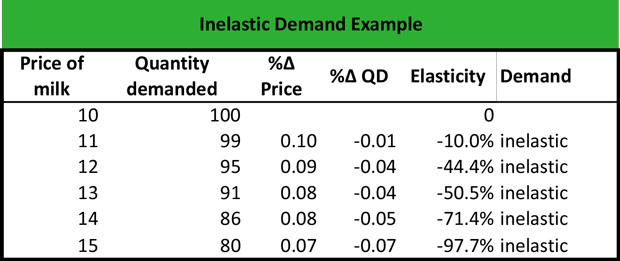Definition: Inelastic demand is the economic idea that the demand for a product does not change relative to changes in that product’s price. In other words, as the price of a good or service increases or decreases, the demand for it will stay the same. This typically occurs in convenience goods that consumers need every day.
What Does Inelastic Demand Mean?
What is the definition of inelastic demand? Demand for a good is relatively inelastic when the percentage change in price is more than the quantity demanded. This means that consumers do not react to changes in commodity prices and continue to request the same amount of a product or a service, regardless of its price.
Firms are interested in the elasticity of demand so that they adjust their operations and product costs according to consumer needs while lower risk and realizing a profit. The inelastic demand curve is a steep curve that becomes steeper as the quantity demanded is not changing. The relatively inelastic demand is indicated by – 1 < Ed < 0.
Let’s look at an example.
Example
Marion owns a grocery store and sells milk, eggs, and grocery goods. Over the past three months, the demand for milk has increased, and Marion decides to raise the price of milk from $10 to $12. What will happen to the quantity demanded?
Because the milk is a convenience good, a rise in the price of milk will cause a lower change in the quantity demanded. Marion notices that the quantity demanded declines from 100 to 99. Marion calculates the price elasticity of demand for milk to set a price that can generate a profit to her store.
The price elasticity of demand for milk is:
Ed = % change in quantity demanded / % change in price = (95/100) -1 / (12/10) – 1 = -1% / 10% = -10%
Marion calculates the price elasticity of demand for milk for different prices as follows:

As the price increases, the percentage change in price is more than the quantity demanded. Therefore, the demand for milk is inelastic because it is a convenience good that consumers buy every day, regardless of the change in price.
Summary Definition
Define Inelastic Demand: Inelastic demand occurs when consumers’ buying habits don’t change relative to price changes in the goods and services they consume.


